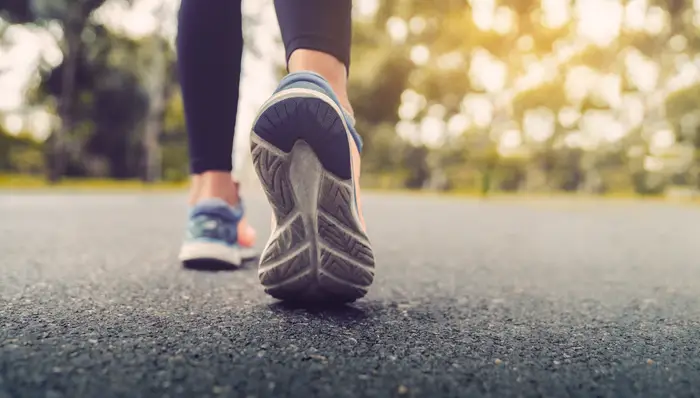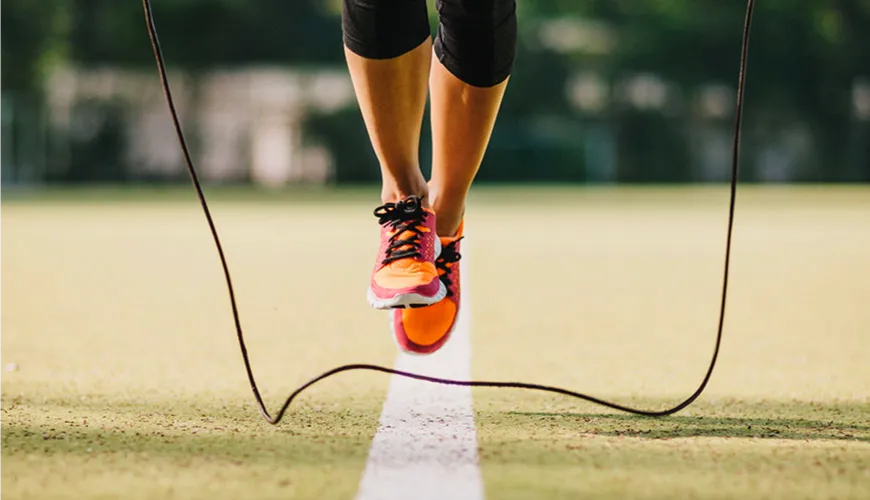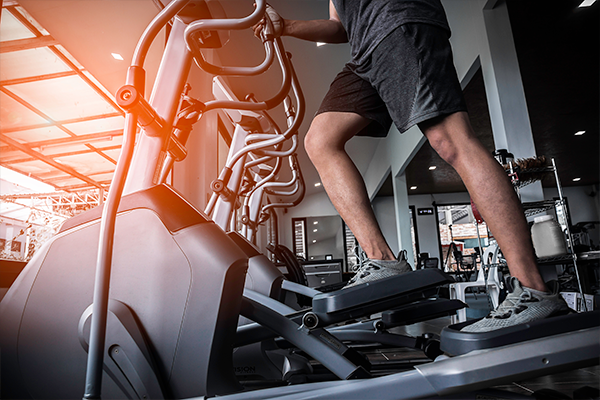Cardiovascular exercise, commonly known as cardio, is a fundamental component of a well-rounded fitness regimen. It involves any activity that raises your heart rate and keeps it elevated for an extended period. Cardio exercises are essential for improving heart health, boosting endurance, burning calories, and enhancing overall well-being. This comprehensive guide will provide detailed information on the benefits, types, exercises, tips for success, and common mistakes to avoid in cardio training.
Benefits of Cardio Exercises
Cardio exercises offer numerous health benefits, making them a crucial part of any fitness routine:
- Improved Heart Health
- Cardiovascular Strength: Regular cardio workouts strengthen the heart, enabling it to pump blood more efficiently. This reduces the risk of heart disease, high blood pressure, and stroke.
- Blood Circulation: Enhanced blood circulation ensures that oxygen and nutrients are efficiently delivered to tissues and organs.
- Increased Endurance and Stamina
- Enhanced Aerobic Capacity: Cardio exercises improve the body’s ability to utilize oxygen, increasing stamina and reducing fatigue during physical activities.
- Energy Levels: Regular cardio boosts overall energy levels, making daily tasks easier and less tiring.
- Weight Management
- Calorie Burn: Cardio exercises are effective for burning calories, aiding in weight loss and weight management.
- Metabolism: Regular cardio can increase your metabolic rate, helping you burn more calories even at rest.
- Mental Health Benefits
- Mood Improvement: Cardio releases endorphins, the body’s natural mood elevators, which can reduce symptoms of depression and anxiety.
- Stress Reduction: Physical activity helps lower stress levels and promotes better sleep.
- Enhanced Respiratory Function
- Lung Capacity: Cardio exercises improve lung capacity and efficiency, making it easier to breathe during physical exertion.
- Oxygen Utilization: Better oxygen utilization during cardio workouts enhances overall respiratory health.
Types of Cardio Exercises
Cardio exercises can be classified into various types based on intensity, duration, and the specific body parts they target. Here are the primary categories:
- Low-Intensity Steady State (LISS) Cardio
- Examples: Walking, light jogging, cycling, swimming.
- Benefits: Suitable for beginners, improves basic cardiovascular health, burns fat efficiently over extended periods.
- High-Intensity Interval Training (HIIT)
- Examples: Sprint intervals, jump rope, burpees, cycling sprints.
- Benefits: Burns more calories in less time, improves aerobic and anaerobic fitness, boosts metabolism.
- Circuit Training
- Examples: Combining strength training exercises with short bursts of cardio, such as jumping jacks or mountain climbers.
- Benefits: Builds strength and endurance simultaneously, efficient full-body workout.
- Dance Cardio
- Examples: Zumba, aerobics, dance classes.
- Benefits: Fun and engaging, improves coordination, great for social interaction.
- Sport-Specific Cardio
- Examples: Basketball, soccer, tennis.
- Benefits: Combines cardio with skill development, highly engaging, improves agility and speed.
Basic Cardio Exercises
These exercises can be done at home or at the gym and are ideal for beginners to advanced fitness enthusiasts:

1. Walking
How to Perform:
- Posture: Stand tall with your head up, shoulders back, and core engaged.
- Movement: Walk at a brisk pace, swinging your arms naturally to help maintain balance and rhythm. Ensure your heel strikes the ground first, then roll through to your toes.
- Breathing: Maintain steady, deep breaths to keep a consistent pace.
Duration:
- Aim for at least 30 minutes per session.
- Beginners can start with shorter sessions (10-15 minutes) and gradually increase the duration.
Benefits:
Weight Management: Helps burn calories and can aid in weight loss or maintenance.
Low-Impact: Gentle on the joints, making it suitable for all fitness levels.
Accessibility: Requires no special equipment and can be done anywhere.
Cardiovascular Health: Improves heart health by increasing heart rate and circulation.

2. Running
How to Perform:
- Form: Maintain a steady pace with a straight back, relaxed shoulders, and arms bent at 90 degrees. Ensure your foot strikes the ground mid-foot and rolls forward.
- Stride: Keep your strides short and quick rather than long and bounding.
- Breathing: Breathe in rhythm with your steps to maintain a consistent pace.
Duration:
- Start with shorter sessions (10-20 minutes) and gradually increase the running time as your endurance improves.
- Aim for 30-45 minutes per session for optimal benefits.
Benefits:
Muscle Strength: Strengthens leg muscles, including the quadriceps, hamstrings, and calves.
Calorie Burn: High number of calories burned per session, aiding in weight loss.
Cardiovascular Health: Strengthens the heart and improves overall cardiovascular function.

3. Cycling
How to Perform:
- Position: Sit upright on the bike with your back straight, core engaged, and hands gripping the handlebars.
- Pedaling: Cycle at a moderate to vigorous pace, ensuring your knees stay in line with your toes.
- Resistance: Adjust the resistance to challenge your muscles without compromising form.
Duration:
- Aim for 30-60 minutes per session.
- Beginners can start with shorter durations and gradually increase.
Benefits:
Endurance: Improves cardiovascular endurance and overall stamina.lity.
Low-Impact: Easy on the joints, making it ideal for those with joint issues.
Muscle Strength: Strengthens lower body muscles, including the quadriceps, hamstrings, and calves.

4. Jump Rope
Target Muscles: Shoulders, triceps.
How to Perform:
- Starting Position: Stand with feet shoulder-width apart, holding a dumbbell in each hand at shoulder height with palms facing forward.
- Pressing Phase: Press the weights overhead until your arms are fully extended. Keep your core engaged and avoid arching your back.
- Lowering Phase: Lower the weights back to shoulder height in a controlled manner.
- Breathing: Exhale as you press the weights up and inhale as you lower them.
Tips:
- Maintain a strong core to stabilize your body during the lift.
- Avoid locking your elbows at the top of the movement.
- Use a weight that allows you to maintain proper form without straining.
Benefits:
Improves shoulder mobility and functional strength.
Strengthens the shoulders and triceps.
Enhances upper body stability.

5. Swimming
THow to Perform:
- Strokes: Swim laps using various strokes such as freestyle, breaststroke, or backstroke to work different muscle groups.
- Breathing: Maintain a consistent breathing pattern to keep a steady pace.
- Technique: Focus on proper technique to maximize efficiency and reduce the risk of injury.
Duration:
- Swim continuously for at least 30 minutes per session.
- Beginners can start with shorter durations and gradually increase.
Benefits:
Endurance: Improves cardiovascular and muscular endurance.
Full-Body Workout: Engages multiple muscle groups, providing a comprehensive workout.
Low-Impact: Gentle on the joints, making it suitable for individuals with joint issues or injuries.

6. HIIT Workouts
How to Perform:
- Intervals: Alternate between high-intensity exercises (such as sprinting, burpees, or jumping jacks) and low-intensity recovery periods.
- Effort: Push yourself to maximum effort during high-intensity intervals.
- Recovery: Use the low-intensity periods to catch your breath and prepare for the next high-intensity interval.
Duration:
- Sessions typically last 20-30 minutes.
- A common structure is 30 seconds of high-intensity exercise followed by 90 seconds of low-intensity recovery.
Benefits:
Metabolism Boost: Increases metabolism, helping you burn more calories even after the workout.
Efficient Calorie Burn: Burns more calories in less time compared to steady-state cardio.
Fitness Improvement: Enhances both aerobic and anaerobic fitness.
Progression in Cardio Training
To continue improving your cardiovascular fitness and avoid plateaus, it’s essential to progressively increase the intensity, duration, or frequency of your cardio workouts. Here are some strategies:
- Increase Intensity
- Add Speed: Gradually increase your walking, running, or cycling speed.
- Incorporate Intervals: Add short bursts of high-intensity efforts into your workout (e.g., sprinting for 30 seconds every 5 minutes during a run).
- Extend Duration
- Longer Sessions: Gradually extend the duration of your cardio sessions. For example, increase your run from 30 minutes to 45 minutes.
- Add Time: Add an extra 5-10 minutes to your cardio workout each week.
- Increase Frequency
- More Days: Add an additional cardio session to your weekly routine. For example, if you’re currently doing 3 sessions per week, increase to 4.
- Vary Workouts
- Different Activities: Mix different types of cardio workouts to keep things interesting and challenge your body in new ways.
- Cross-Training: Combine different cardio exercises like running, swimming, and cycling in your routine.
Sample Cardio Workout Routine
Here’s a sample cardio workout routine that incorporates various types of exercises:
Day 1: LISS Cardio
- Activity: Brisk walking or light jogging.
- Duration: 45-60 minutes.
Day 2: HIIT Workout
- Activity: Jump rope and sprint intervals.
- Duration: 20-30 minutes (e.g., 30 seconds sprinting, 90 seconds walking, repeat).
Day 3: Active Recovery or Rest
- Activity: Gentle yoga or stretching.
Day 4: Circuit Training
- Activity: Combine strength and cardio exercises (e.g., squats, push-ups, jumping jacks).
- Duration: 30-45 minutes.
Day 5: Sport-Specific Cardio
- Activity: Play a sport like basketball or soccer.
- Duration: 60 minutes.
Day 6: Dance Cardio
- Activity: Attend a dance class like Zumba.
- Duration: 45-60 minutes.
Day 7: Rest or Light Activity
- Activity: Light walk or stretching.
Tips for Success
- Stay Consistent
- Regular Schedule: Stick to a regular cardio schedule to see continuous improvement.
- Set Goals: Set achievable goals and track your progress to stay motivated.
- Warm-Up and Cool Down
- Preparation: Always warm up before your cardio session to prepare your muscles and joints.
- Recovery: Cool down and stretch after your workout to prevent soreness and promote flexibility.
- Hydrate
- Stay Hydrated: Drink plenty of water before, during, and after your cardio workouts to stay hydrated.
- Listen to Your Body
- Avoid Overtraining: Pay attention to your body’s signals and avoid overtraining. Rest if you feel excessively fatigued or experience pain.
- Mix It Up
- Variety: Incorporate different types of cardio exercises to keep your routine interesting and challenging.
Common Mistakes to Avoid
- Skipping Warm-Up and Cool Down
- Importance: Always include a warm-up and cool-down in your routine to prevent injuries and promote recovery.
- Overdoing Intensity
- Balance: Avoid going too hard too soon. Gradually increase the intensity of your workouts to avoid burnout and injury.
- Neglecting Form
- Proper Technique: Focus on maintaining proper form to maximize the effectiveness of your workout and prevent injuries.
- Ignoring Rest Days
- Recovery: Incorporate rest days into your routine to allow your body to recover and rebuild.
- Inconsistent Training
- Routine: Stick to a consistent training schedule to achieve and maintain your fitness goals.
